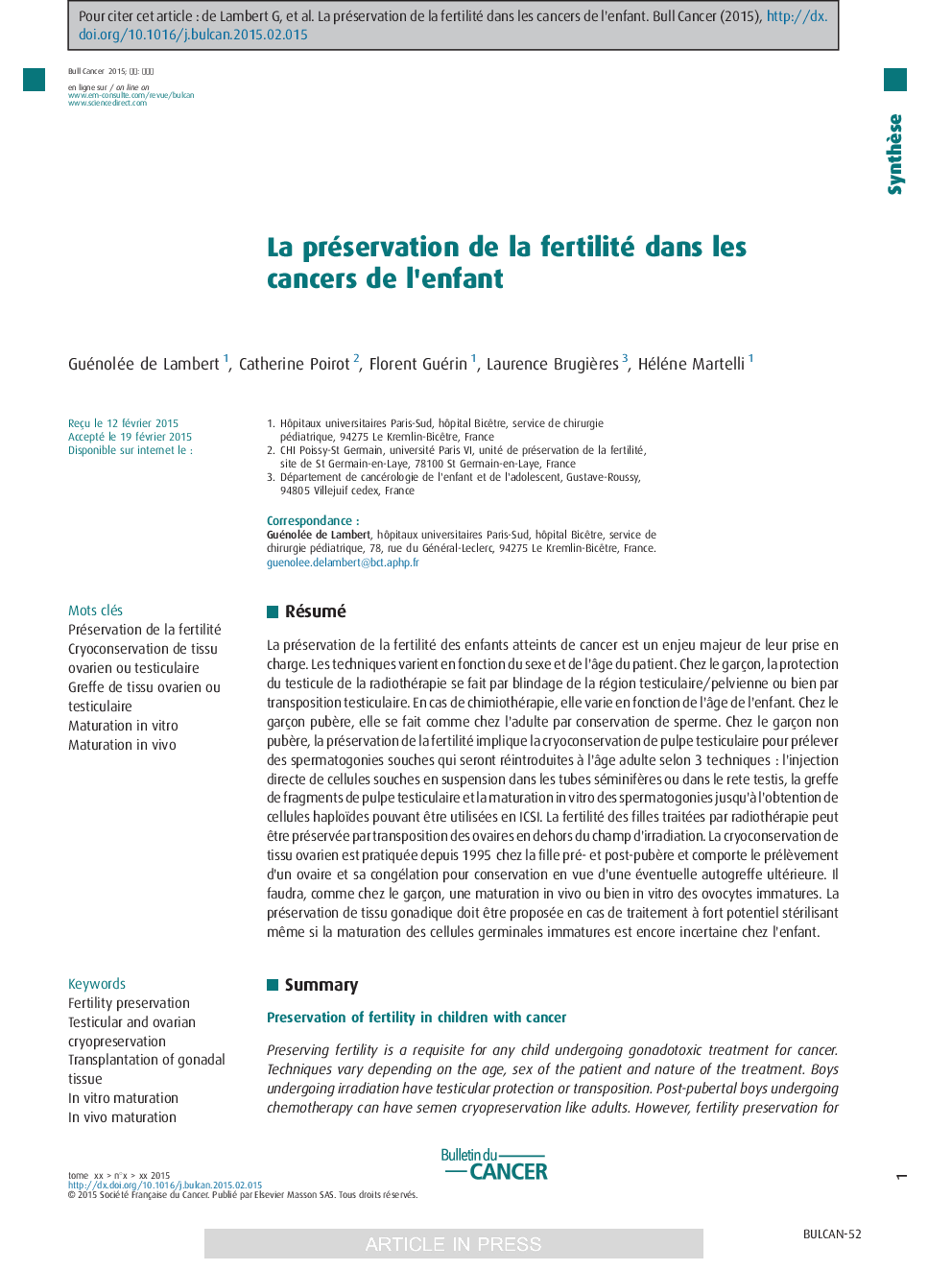| Article ID | Journal | Published Year | Pages | File Type |
|---|---|---|---|---|
| 6189937 | Bulletin du Cancer | 2015 | 7 Pages |
Abstract
Preserving fertility is a requisite for any child undergoing gonadotoxic treatment for cancer. Techniques vary depending on the age, sex of the patient and nature of the treatment. Boys undergoing irradiation have testicular protection or transposition. Post-pubertal boys undergoing chemotherapy can have semen cryopreservation like adults. However, fertility preservation for pre-pubertal boys undergoing chemotherapy implies testicular tissue cryopreservation. Research concentrates on germ cell transplantation, autotransplantation of testicular tissue or in vitro spermatogonial maturation in order to later restore spermatogenesis. Ovarian transposition can be undergone in case of brachytherapy or external beam radiotherapy in girls and has published success rates of 80%. Ovarian cryopreservation has been developed since 1995 for pre-pubertal and post-pubertal girls undergoing chemotherapy. The ovary is retrieved surgically and ovarian cortical segments are frozen. Thawing and transplantation of gonadal tissue are the next steps to restoring fertility. However, immature oocytes will have to be matured either in vivo or in vitro in order to restore fertility. Fertility preservation must be offered to children with cancer even if maturation of immature germ cells is uncertain for research 20 to 30 years from now will probably enable fertility restoration.
Keywords
Related Topics
Health Sciences
Medicine and Dentistry
Oncology
Authors
Guénolée de Lambert, Catherine Poirot, Florent Guérin, Laurence Brugières, Héléne Martelli,
